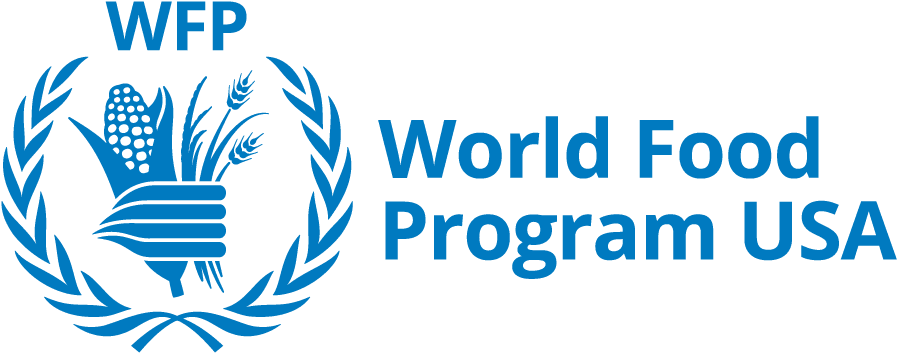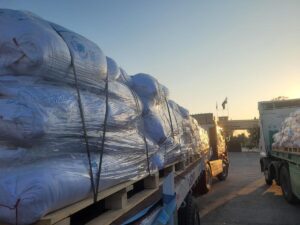Burkina Faso
Hunger from Conflict & Climate
The arid, Sahel nation faces a multidimensional crisis driven by conflict, political instability and the climate crisis. Millions are going hungry. WFP is delivering immediate food assistance and helping people build resilience against climate shocks.
WFP/Evelyn Fey
Make a difference in Burkina Faso
Hunger Stats
Violent conflict in Burkina Faso is driving people from their homes and into poverty and hunger.
2M
people are displaced from their homes
2.7M
people are facing extreme hunger
40%
of the population lives below the national poverty line
2M
people are displaced from their homes
2.7M
people are facing extreme hunger
40%
of the population lives below the national poverty line
2M
people are displaced from their homes
Burkina Faso Facts
New York
Show Places

New York
×
Geocoding Error Occured.
Tried to Geocode: Burkina Faso
Error Type: ERROR
Please be sure to follow the tutorial on how to setup the Google APIs required for the Advanced Google Map Widget.
Google Map API Key Tutorial
Population: 22.1 million people.
Background: Burkina Faso gained its independence from France in 1960 as Upper Volta, then renamed to Burkina Faso in 1984.
Geography & Climate: As a landlocked country in West Africa, Burkina Faso is bordered by Mali, Niger, Benin, Togo, Ghana and Côte d’Ivoire. The country has a tropical climate with a rainy and dry season. Located in the Sahel Region, it is highly susceptible to extreme weather events of droughts and flooding.
Economy: On the Human Development Index, Burkina Faso ranks 184 out of 191 countries. 40% of its population lives below the poverty line and over 80% rely on subsistence agriculture for their food.
Causes of Hunger
Conflict
For decades, Burkina Faso has experienced internal conflict, marked by transitions of power through military coups. In the past several years, armed groups have carried out violent attacks throughout Burkina Faso, resulting in deaths and mass displacement. One in ten people have fled their homes due to rising violence. This makes Burkina host to one of the fastest-growing displacement crises in the world.
Learn More Climate
Burkina Faso is highly vulnerable to climate shocks. Over the past four decades, Burkina Faso has experienced accelerated deforestation, desertification and soil erosion. Pockets of drought that swing into intense flooding wreak havoc on the land. In 2022, heavy rains and floods across West Africa destroyed crops and caused mass displacement. With 80% of the population dependent on agriculture for food and income, the country’s food security is highly vulnerable to these climate shocks.
Learn More  WFP/Marwa Awad
WFP/Marwa AwadHistory of Hunger in BUrkina Faso
Early History

Instability Over Hunger
Burkina Faso has experienced repeated military coups and social unrest. In the 2000’s, there were multiple instances of protests, riots and strikes in response to rising food prices and high costs of living.
2010-2012

Famine & Drought
In 2010, famine hit the Sahel region and caused 4.5 million people in Burkina Faso to fall into hunger. While people were still recovering, a severe drought spread across the Sahel in 2012, affecting 2 million people in Burkina Faso with mass hunger and displacement.
2016-Present

Increased Armed Attacks
Armed militant groups carried out multiple attacks on civilian populations, creating a humanitarian crisis.
Thousands of schools were closed, over a million people were displaced, and more then 3 million people became food insecure. Humanitarian resources have also been attacked and looted. WFP provided monthly food and cash assistance to displaced people.
01-Jan-1970, 00:33

Unprecedented Flooding
In October of 2022, above-average rainfall across West and Central Africa caused flooding in 19 countries, including Burkina Faso. The floods displaced people and destroyed crops, pushing more people into hunger. WFP provided emergency food and utilized helicopter drops for hard-to-reach places.
Hunger Relief Burkina Faso
We’ve been in Burkina Faso since 1967. Through conflict and climate disasters, we’ve provided food for people in need. Even as increasing violence causes more displacement and poses a security risk for WFP operations, we continue to deliver food and help build resiliency against climate shocks, helping over 3 million people in Burkina Faso last year.

Food & Cash
As violent attacks and displacement continues, we provide emergency food assistance to people across the country including internally displaced persons, refugees and host families.

School Meals
Since 2004, we have supported the government by implementing a school meals program, including take-home rations. Last year, we fed over 480,000 schoolchildren in Burkina Faso.

Child Nutrition
With malnutrition rates above emergency thresholds in parts of Burkina Faso, we help prevent and treat malnutrition in children as well as pregnant and breastfeeding women.

Resilience Building
We help boost farmers’ resilience against climate shocks by providing storage technologies, training to reduce food loss and climate insurance in towns likely to be affected by drought.
Lastest News
- Blog
- April 21, 2023
- Blog
- March 13, 2023





